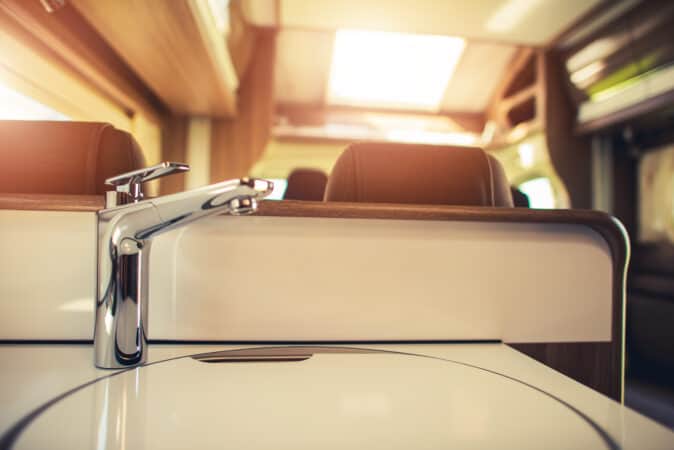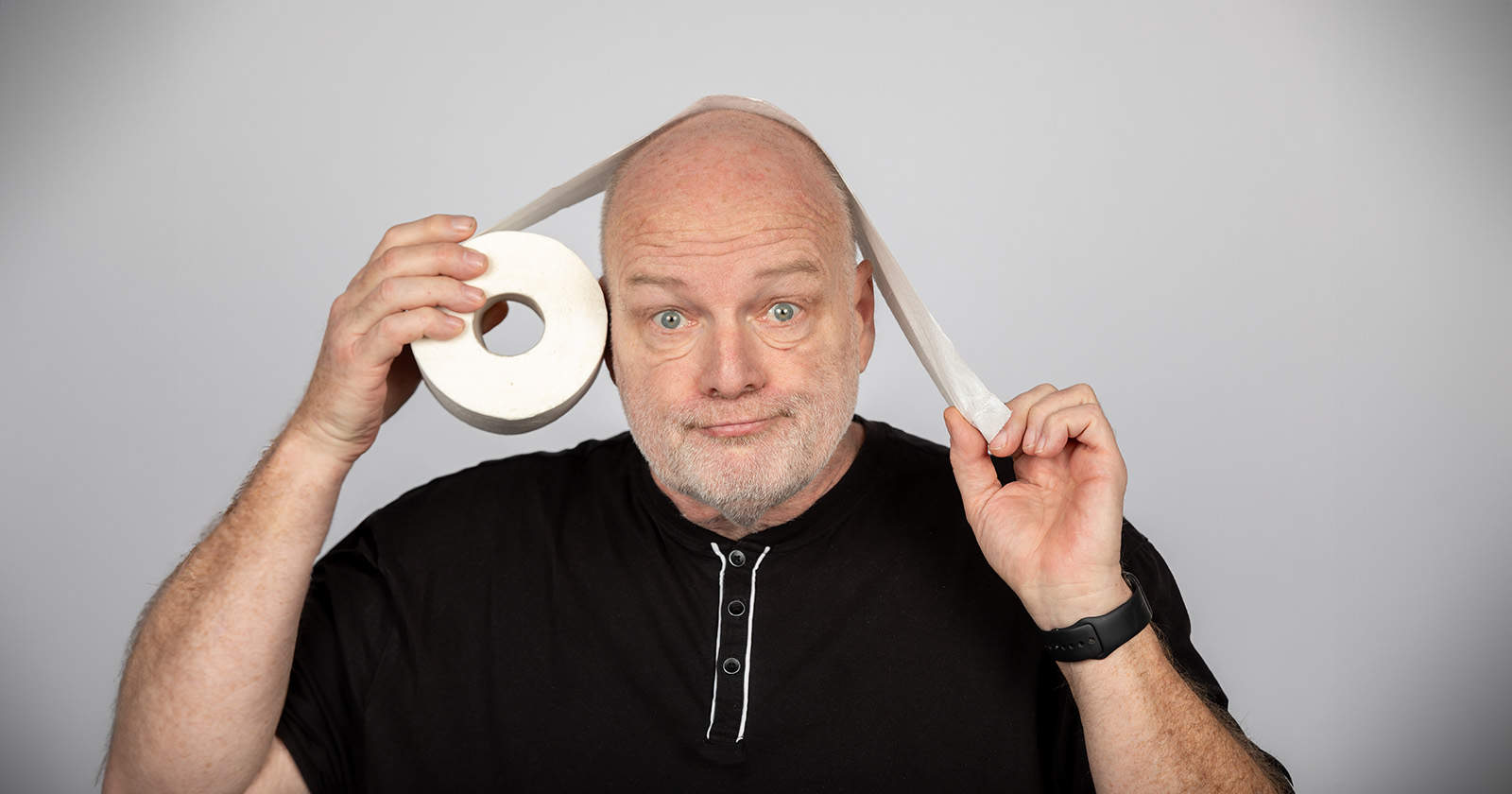Cleaning your water storage tanks is one of the many chores that come with living the RV lifestyle. Flushing systems, flexible wands, chemicals, and other products exist to clean out your black and grey water tanks. People do not immediately think about cleaning out the RV fresh water tank. Clean water goes into the tank, so many people think that it stays clean. The truth of the matter is that eventually build up from contaminants can occur. Flushing out your freshwater tank can keep RV water fresh and keep you healthy.
How to Protect and Purify Your RV’s Drinking Water Supply
The freshwater tank does not require a lot of maintenance. Flushing it out should be apart of your preventive maintenance routine every six months. There are chemical cleaners out there — like the Star Brite Aqua Clean Water Tank Flush — that you can use to clean out your tank.
There are home remedies that you can use too that are just as effective. Either way, the procedure is the same.
RV Fresh Water Tank Flushing Procedure
- Disconnect your shore water supply.
- Drain your fresh water tank completely
- If you use a water filter, replace it with a fresh one. For this process, you will want to avoid contaminants as much as possible.
- Create a mixture of a ¼ cup of bleach to 15 gallons of water. Using more bleach than recommended can damage your freshwater tank
- Fill your water tank up completely
- Open all of your water faucets (kitchen sink, bathroom sink, shower, etc.) to get the cleansing mixture through your fresh water lines
- Do not forget about the hot water as well. You will want to flush out your water heater as well
- Close all of the faucets once you smell the bleach odor coming from the faucet
- If you have a washing machine inside your RV, run an empty cycle through it with the mixture
- Allow the mixture to sit in the tank and water lines for at least 4 hours or more
- Some recommend letting it sit overnight depending on the degree of contamination
- To further scrub your tank, you can take a drive with your RV around the block to create agitation
- Connect your sewer line and open the grey water release valve. Open your faucets and let the mixture flow through your drains to the grey water tank.
- This will also give you the added benefit of flushing out your drains and the grey water tank as well
- Once you no longer smell the bleach, you can then turn the faucets off
- Open the faucets again and run fresh water through the tank and lines to fully flush out the bleach.

Common Contaminants
There are different contaminants that can get into your water supply. Even if you are using a trusted water source, things can still get in in your tank and water lines. Even though your water lines and tank are sealed, hot temperatures and sitting water can encourage the growth of impurities.
Things like:
- Bacteria
- Algae
- Fungus
- Mineral particles
- Allergins
Preventive Measures
There are a number of preventive measures you can take to keep your tank and water lines clean. We still recommend flushing out your water system every 6 months, but these methods can keep the problems small.
RV Fresh Water Filters
A great way to protect your water lines and tank from contaminants is to attach an external water filter to your shore water supply. Many of these filters clean the water even before it gets into your RV. Filters like the Clear2O water filter uses solid-block carbon technology and will filter out far more contaminants than other brands, down to the 1-micron level.
There are other more expensive filters that you can attach externally as well. With these filters, you replace the filters instead of the whole unit. The Watts Flow-Pur Dual Exterior Filter is free-standing and uses two filters together. These type of filters gives the water a better filtration and can last longer.
Designated Water Hose
When you walk through the RV store, you will notice that they have white or blue water hoses. These hoses are specially designed to keep your water drinkable. They are lined with special insulation and better seals to keep things sanitary.
If you use a regular hose to empty your black and grey tanks, make sure you have a separate hose for this. A typical green hose from your neighborhood garden center should work just fine.
Trusted RV Fresh Water Sources
According to FEMA, if you fill your fresh water tank from a city water source, or a source you can trust, you should not have to worry about contamination. FEMA also recommends that you drain sitting fresh water out of your tank every 6 months.
If you have to use a water source you are unsure about, keep bottle water handy for drinking. Once you get back to a trusted water source, we recommend flushing out your freshwater system to sterilize it.
Clean the Water Containers
Drydock camping requires refilling your freshwater tanks often. Many people use portable water containers to refill their water. Some of these water refill areas can build up bacteria or algae in their pipes and hoses due to the constant use and damp conditions. Your freshwater containers can become contaminated from these water refill areas.
To combat this, we recommend that you clean out your containers regularly to prevent any buildup in your RV tank. Replace your water containers periodically to make sure you are getting the freshest water possible.
Water Heater
Even though your hot water heater uses high temperatures to heat your water, some bacteria and algae can withstand the heat. When you are flushing out your water system, make sure you drain the water heater as well. By turning on the hot water faucets in your coach, the cleaning mixture with route through your water heater.
Only drain the water heater when it is not hot or pressurized. To properly drain it, turn the power off of the water heater and turn on your hot water faucets to relieve the pressure. Most of these tanks are 6-10 gallons, so it should not take long to empty them out.
Drains
If you are getting a bad smell from your drains, there are deodorant products out there just for grey water tanks. Camco has a Grey Water Odor Control product that is lemon scented.
Other methods to deodorize and remove sludge from your drains can be home remedies. Orange soda can clean the sludge out of your drains. The carbonation can scrub the drains safely. The orange flavoring can also give a neutralizing deodorant.
Another option is using two tablespoons of baking soda mixed with water. The baking soda can deodorize your drains as well as clean the pipes.
Winterizing Your RV Fresh Water Lines
If you are storing your RV during the winter months, freezing water can destroy your tank and lines. As the water expands and turns to ice, it increases pressure on you water system. The ice can break seals and crack your water tank causing expensive repairs.
Using winterizing chemicals can protect against this. The liquid agents are designed not to freeze and prevent your lines from drying out. Many of your water lines are made of rubber-like material that can crack due to dry rot.
Another benefit of winterizing chemicals is that they prevent contaminants from building up. Solutions like the Antifreeze Burst Protection product can protect your water lines down to -50F. It also prevents corrosion and contaminant build-up.
When it’s time to use the RV again, flushing out your system with the instructions above will clean out the winterizing agents. Many of these chemicals use FDA approved materials in them, so you do not have to worry about poisoning yourself if there is a small amount left.
Keep Your Entire RV Safe and Healthy
Part of enjoying the RV life is taking everything with you. You rely on the amenities of your coach to keep you safe and healthy. By cleaning out your RV fresh water tank, you are ensuring that your adventure on the road will be a good one.
There are other preventive measures you can take to keep your RV in the best condition. We recommend creating a maintenance schedule for yourself. Here is a checklist of things to be done to give your RV the longevity you want.
- Flush out your water tanks (black, grey, and freshwater)
- Rehydrate your rubber seals and roof
- Inspect your seals and use silicone caulk to fix any
- Refill your Propane if necessary
- Look for rust, corrosion, and other signs of oxidation
- Top off the automotive fluids
- Keep up with the oil changes for your engine and generator
- Check the air pressure in your tires
- Check your filters and replace them when necessary
- Check automotive belts and hoses
- Replace automotive lights that are burnt out and broken reflectors
- Check battery power levels and power equipment
There are other things you should check as well, but by taking these steps, you can keep your RV safe and healthy for yourself and your family.




